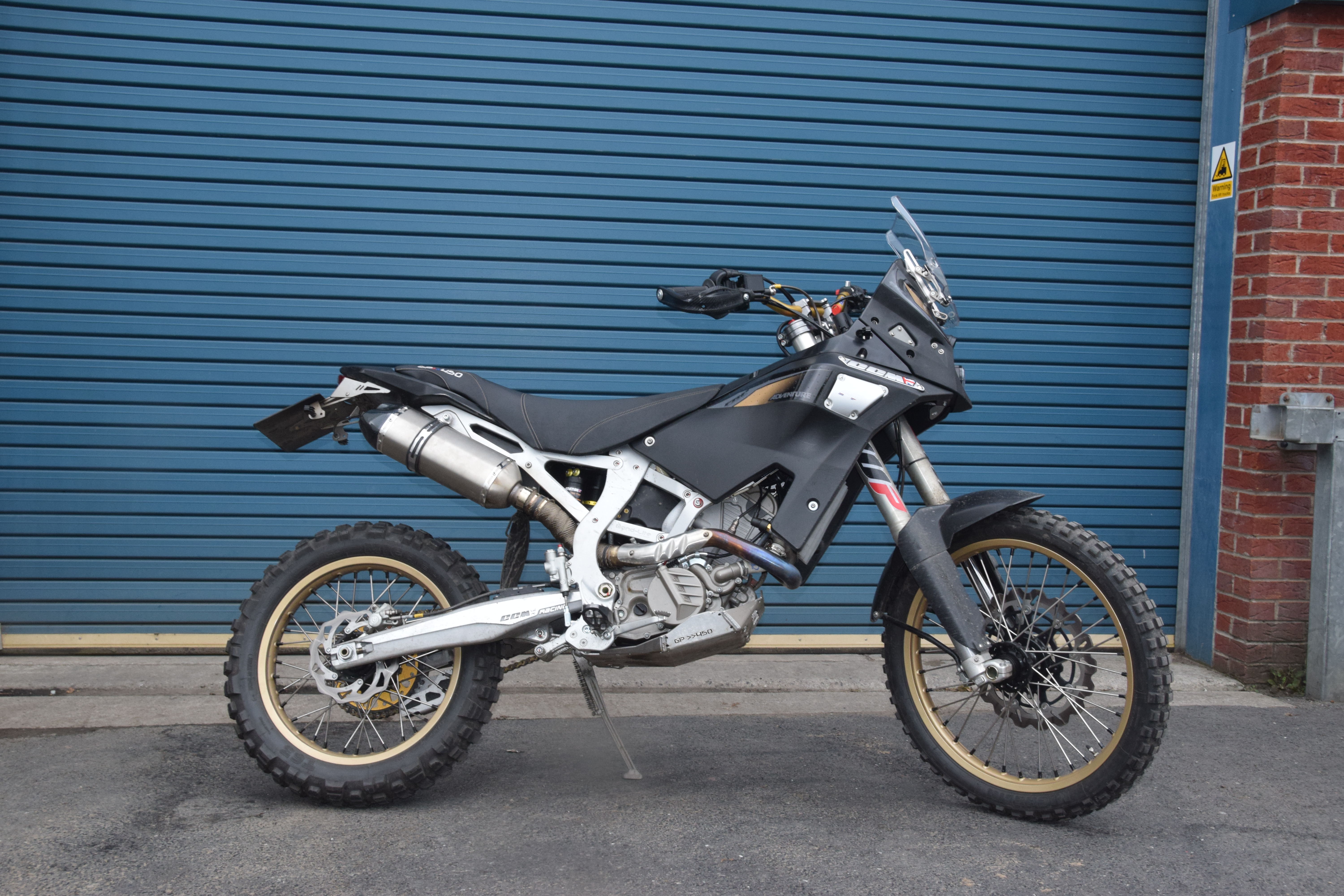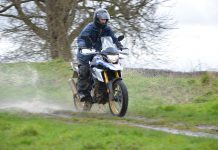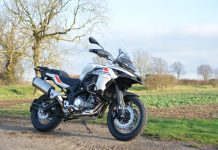It’s hard to imagine the process of building a bike these days. Here we speak to Christofer Ratcliffe, lead designer of the CCM GP450 Adventure, about the design and build process of that bike
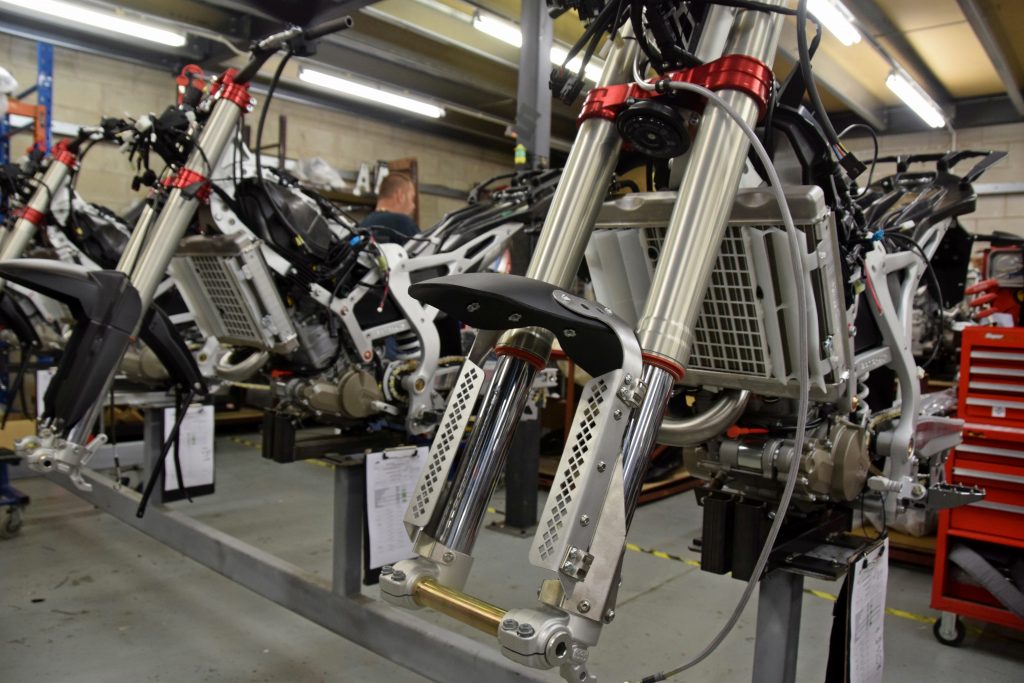
 Where did the idea for the GP450 begin?
Where did the idea for the GP450 begin?
It was born out of a conversation at CCM, back in 2010, about how the rising boom in off-road capable adventure bikes was full of road based travel bikes that had been adapted to tackle the rough stuff. We thought, wouldn’t it be great if we could turn a bike full of natural off-road DNA into a travel bike.
How did you get involved with the project and what were you doing before this?
I was working not too far away, designing large industrial machines used for coating oil and gas pipelines. I was absolutely loving it, but then happened to come across an ad for a motorcycle Design Engineer role around the corner from my house. I immediately picked up the phone and shortly after went to meet Austin at the factory. Luckily I had a bit of a background in Automotive design from University and a short spell as a development engineer at TVR, so Austin gave me a chance. CCM were very old school in their approach to designing bikes, so I think I just came at the right time and could operate the new fangled PC and CAD system! For the first 6 months or so I was working with the MX race team, trying to quickly catch up on the development and testing CCM had done on the race bikes and bonded chassis.
What were the particular challenges in designing a bike of this nature?
When we sat down and made a list of dream specifications and geometry for the bike we realised why it hadn’t been done before. Everything you want on a nimble off-road bike was the total opposite of what you want on a comfortable long range travel bike.
Trying to create a low seat height combined with MX style ground clearance whilst trying to keep a comfortable all-day riding position was tricky to say the least.
Adding 20-litres of fuel on the bike was difficult. We didn’t want to compromise the narrow standing off-road position or compromise the long seat to slide up to shift weight over the front or compromise the weight distribution of the bike. Affecting any one of these would have taken away from the off-road capabilities. And believe me, the whole Clews family are off-road perfectionists so would not compromise one bit on how the bike performed in the dirt. After a few years of testing and changes we finally settled on a set up that felt as stable as a 600cc road bike on the road, but was as easy as a 250cc enduro on really tough off-road.
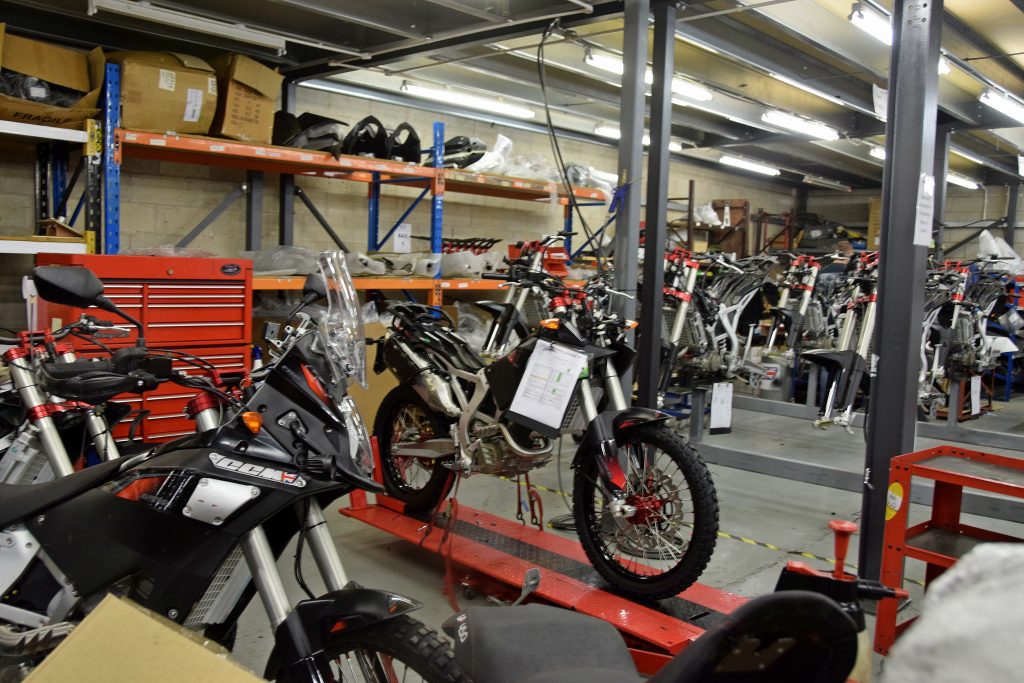
Where do you even begin in the process of designing a new bike from the
ground up?
Starting from the ground up with a blank sheet was really a breath of fresh air. Once we had set the geometry and essential spec of the bike we set to designing the bike on the screen up to a point where we were happy to produce a CNC billet aluminium chassis to create a rolling test mule. The bonded ali chassis really is the secret of the GP450 as it allows us to control the vibration, stress and weight distribution of the bike with much higher accuracy than a welded frame as it is treated as a solid block of material with no unquantifiable stress points around weld points.
The bike has been designed for function far above all else. If it looks purposeful and utilitarian it’s just because it is rather than being styled to look that way.
Deciphering the mountain of European type approval documents and regulations is enough to send anyone to sleep. The time and expense of gaining these type approvals is by far and away the most difficult part of getting a new bike to market.
Specifically, what are the challenges facing a small volume manufacturer
such as CCM?
We get the expected troubles of a small scale manufacture. When we are developing, or specifying equipment such as suspension, brakes exhaust etc it is pot luck to whether the supplier is dealing with a large development project or production run for a bigger manufacturer. It can get frustrating being pushed down the queue as it has a much bigger impact on a small company like CCM. We do love the David and Goliath battle and it really feeds us all to work harder and try to create something better than what’s already out there. I guess that’s the competitive racing nature coming through.
The flip side of being a small family orientated manufacturer is that we have a great relationship with every CCM owner we have met. Ask any of them and I’m sure they will tell you the same. In the early days of the GP450 we must have had 100 people test riding the prototypes and pre-production bikes. Each test rider offered different opinions based on how they would use the bike, what experiences they had when out on previous adventures and made some suggestions on design features or options. The GP450 was really moulded by these people in the early days. When the design was frozen while we were going through the Type approval process, any suggestions then began to grow into the huge range of after-market options we have now. The GP450 really felt like a bike of the people.
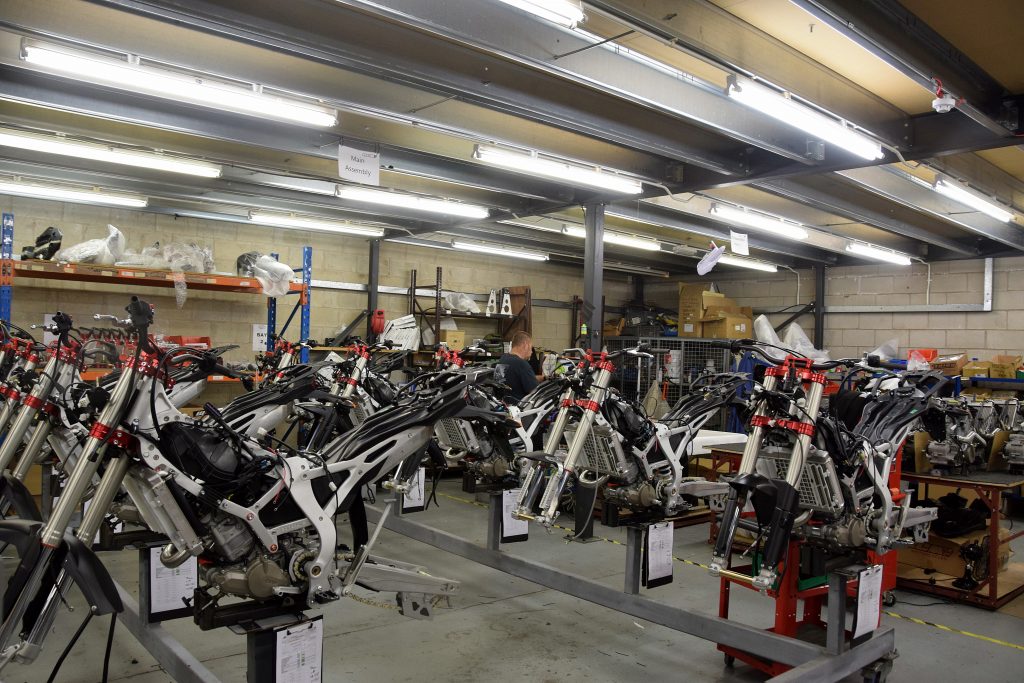
In terms of the engine, how difficult is it for a small volume manufacturer to source an engine and how crucial was engine choice in the GP450?
CCM have good relationships for many years with most manufacturers of motorcycles and engines. The difficult part is choosing the right engine to ideally suit our very specific requirements. The BMW 450 was very lightweight, very under stressed when not ripping round a motocross track at full throttle. The concentric swingarm and sprocket pivot might not have been ideally suited to motocross, but potentially had great advantages for a lightweight adventure bike with better throttle control, better weight distribution under acceleration and hugely increased chain life. During the development stages we worked closely with BMW to ensure we could deliver the 5000 mile service intervals.
We still did a lot of work on the ECU and power delivery to smooth out the low end torque delivery and produce a ride that was still very lively, but not quite up-on-the-front wheel every time the throttle is opened. Although, if anyone knows our mad ex TT racer/sales guy Darren Soothill you might think it doesn’t even need a front wheel!
Lightness was a crucial factor of the bike; how does that requirement impact on the choice of materials, components and technologies? #
Despite our different motorcycling backgrounds amongst all the CCM team there is one common theme that everybody always agrees on, and that is light is right. We are all passionate about making lightweight bikes and I am very passionate about using new technologies and materials that enable us to achieve the impossible. Everything from the bonded forged aluminium chassis to the 1mm thick polymer linkage bearings; every component was considered when striving to save weight.
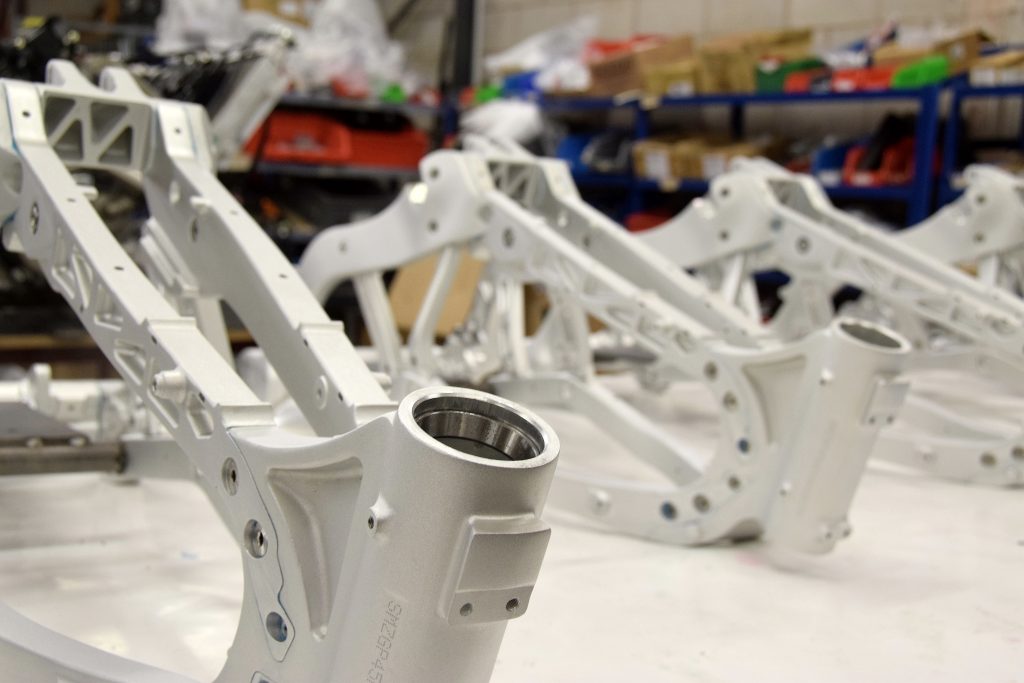
Essentially, how did you make it so light?
If a component doesn’t have at least two functions it doesn’t go on the bike.
And of the final product; what does the GP450 offer that no other manufacturer currently does? What GP450 owners say the most to us is they love that it is a dream off-road, lightweight and puts a huge smile on your face every time you ride it. I think these the things that describe most CCMs. For me (and I may be slightly biased because I’ve finally built myself one) the GP450 is the best all round, everyday, go absolutely anywhere bike there is. I was an off-road novice and accident waiting to happen, but riding the GP450 is so easy to get on with and just makes me feel like a hero on the trails or the tarmac.
What are you most proud of in the bike?
This is a tricky one. In terms of physical parts of the bike, I am very proud of the chassis. But the best feeling is seeing a GP450 out on the road or trails in its natural habitat with someone having a cracking time. That still gives me goosebumps!
What are the challenges going forward in terms of Euro 4 and engine availability, and what can we expect on the horizon?
The major changes with Euro 4 are emissions and ABS brakes. We are able to register new GP450s in limited numbers during 2017, but after that we need to comply with Euro 4. So at this stage we are working behind the scenes on the best way to update the GP450.
Alongside that we have produced a UK only limited edition bike, the Spitfire, which will only go through MSVA tests, as the time and expense to go through other full scale type approvals for a limited run bike would mean it would probably never become available, which would be a great shame. The Spitfire uses a single cylinder Euro 4 capable 600cc engine which is well proven. Having the 600 engine in our artillery is obviously a nice thing to have for future model considerations. Watch this space.
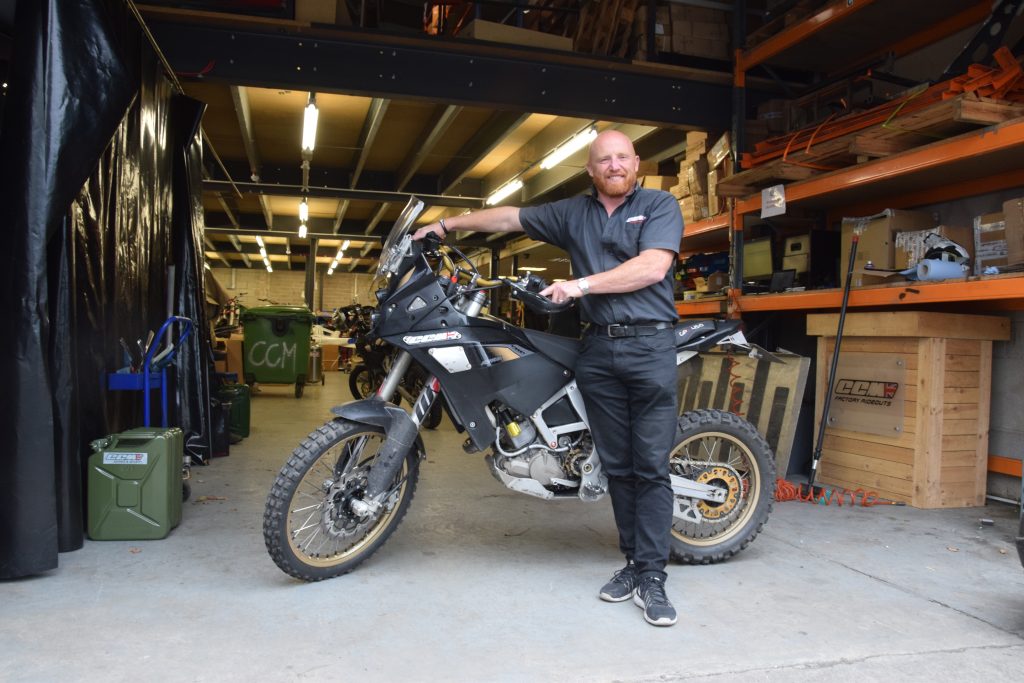
Video review of CCM GP450…


